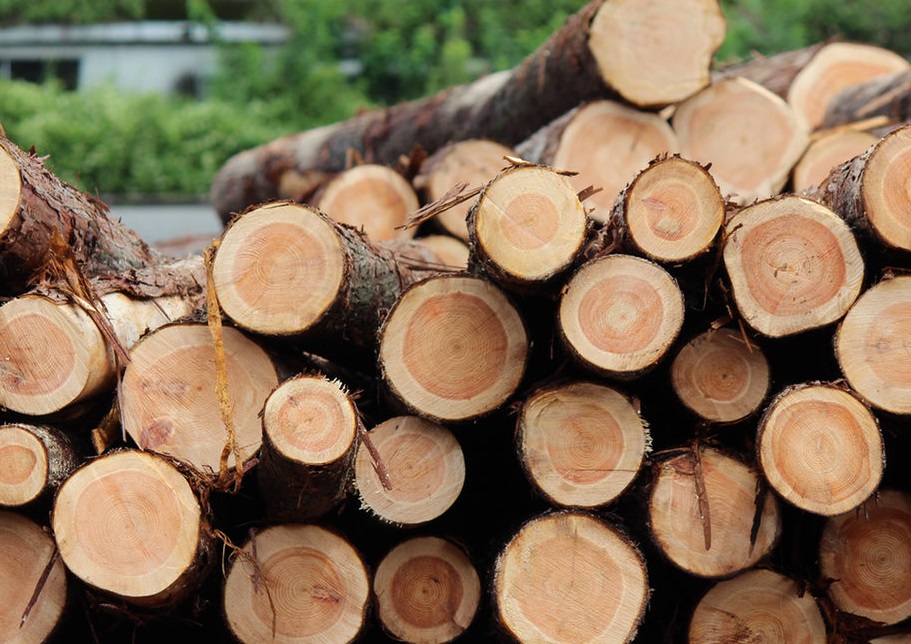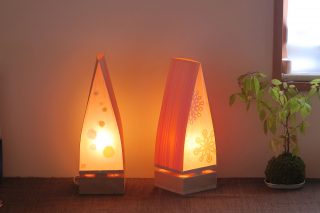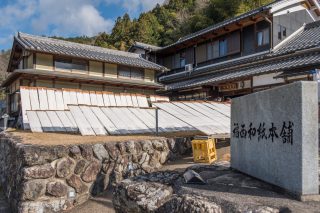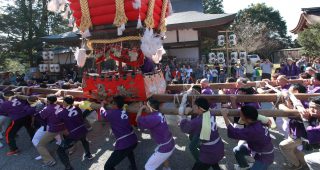A walk through a local lumberyard warehouse was one of my most unforgettable experiences in Yoshino. Thousands of planks of lumber, each emblazoned with a brand certifying its provenance, were stacked row on row, drying out in the late summer heat. They exuded a deep forest scent of cypress and cedar that was both refreshing and relaxing. I wanted to bottle that fragrance and take it home. Indeed, there’s something magical about the forests of Yoshino, and they have even cast their spell upon artists such as Kawase Naomi, the Nara-born director of the 2018 feature film Vision that stars Academy Award-winning actress Juliette Binoche.
When it comes to trees, there’s a lot more to Yoshino than cherry blossom trees. Nestled in the heart of Nara Prefecture, 77 percent of which is forested, Yoshino has a long tradition of producing high-quality lumber products known as Yoshinozai, or Yoshino lumber, which is renowned for both its strength and pink-white color. You can see this wood in places like Tokyo’s ritzy Roppongi Hills complex, where a high-end eyewear shop features all-cedar display cases, and this is only one of many uses.
The main trees in Yoshino’s lumber industry are red cedar and Japanese cypress, accounting for about 80 percent and 20 percent of lumber products respectively. They are especially desirable as building materials because of their rigidity: their wood fibers are densely packed, and annular rings are spaced close together, resulting in average rigidity values that are higher than trees from other regions of Japan. Yoshino’s cedar trees also have few knots, making them ideal for products like sake barrels, as well as ceilings, flooring, bathtubs, and other interior features.
Cedar and cypress trees have been cultivated in the Yoshino region since the fifteenth century. Located near Osaka, a major lumber market, and the Yoshino River, which was used to transport timber, Yoshino was able to thrive as a supplier of building materials. In the late 16th century, the warlord and national unifier Toyotomi Hideyoshi (1537–1598) used Yoshino lumber in the construction of Osaka Castle and other fortresses. Buddhist temples like Todaiji, Shinto shrines, and countless other historical structures in the Kansai region were also made of timber from Yoshino forests. In the 19th and 20th centuries, Yoshino timber reached more markets as rail replaced rivers as a means of lumber transport; Japan’s first domestically produced violins were made from Nara wood. Dogura Shozaburo (1840–1917) helped expand the industry by developing afforestation methods that emphasized planting seedlings close together, thinning extensively, and long growth and cutting cycles, resulting in wood that is strong and uniform. The Dogura Method was later adopted throughout Japan.
In recent years, Nara craftsmen have fashioned a range of products from Yoshino wood. High-quality chopsticks, made from scrap wood left over from milling lumber for building materials, are among the most popular items. Weighing less than 45 grams, rice bowls from the local studio Apple Jack are carved from a single block of wood and are the lightest of their kind in Japan due to the wood’s straight wood grain. Yume Saka, a factory in Sakurai City, makes elegant ballpoint pens and mechanical pencils with a cedar finish. Yoshino wood has also been used to produce serving trays, bento boxes, plates, cups, vases, toys, lampstands, and even makeup brushes—all bringing practicality and beauty to daily tasks. These lovingly produced crafts are great souvenirs for visitors to Yoshino.




